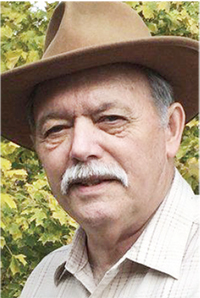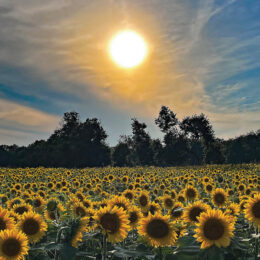by JACK SPAULDING

Jack Spaulding
This fall, two family members unintentionally “tagged” and brought home a deer, doing it the hard way. They hit the deer with their vehicles. Both are experienced drivers who have driven in deer country for years. Thankfully, there were no personal injuries, and both deer were salvaged and processed. To help avoid a similar situation, there are some precautions you can take.
As the days shorten and the breeding season for deer continues the chance of encountering one while driving increases
significantly. Nearly 50 percent of all vehicle accidents involving white-tailed deer occur between October and the end of December, according to deer research biologist Joe Caudell of the Indiana DNR Division of Fish & Wildlife.
The risk of deer-vehicle accidents can be minimized by practicing defensive driving, Caudell said. The Insurance Information Institute provides the following information to reduce your chances of colliding with a deer:
• Deer are most active between sunset to midnight and during the hours shortly before and after sunrise, so be especially attentive at these times.
• Deer often travel in groups, so if you see one, another is likely nearby.
• Be especially careful in areas where you have seen deer before.
• Use high beams when there is no oncoming traffic; scan for deer’s illuminated eyes or dark silhouettes along the side of the road.
• Be especially cautious where agricultural fields are divided from forested areas by roads.
• If you see a deer, slow your vehicle, even if the animal is far away.
• Exercise extreme caution along woodlot edges, at hills or on blind turns.
• Brake when you see a deer in your path, but stay in your lane; most serious crashes occur when drivers try to miss a deer but hit something else.
• Do not rely on deer whistles or other devices. They have not been proven to reduce deer-vehicle collisions.
According to Caudell, drivers should make a point to pay attention to traffic signs warning of deer crossings. Deer-crossing signs are useful for notifying motorists of areas where additional caution should be exercised, but drivers tend to get accustomed to such signage, which can reduce their effectiveness over time.
If you end up hitting a deer, remain calm and be careful.
“Although gentle in nature, deer that are injured or stressed can be extremely dangerous,” Caudell said. “They have sharp hooves and a powerful kick. Do not approach the animal unless you are positive it has died.”
Caudell said deer can be found anywhere in Indiana, including urban settings, so drivers should be on the lookout no matter where they are.
Jack Spaulding is a state outdoors writer and a consumer of RushShelby Energy living along the Flatrock River in Moscow. Readers with questions or comments can write to him in care of Electric Consumer, P.O. Box 24517, Indianapolis, IN 46224; or email jackspaulding@hughes.net.



